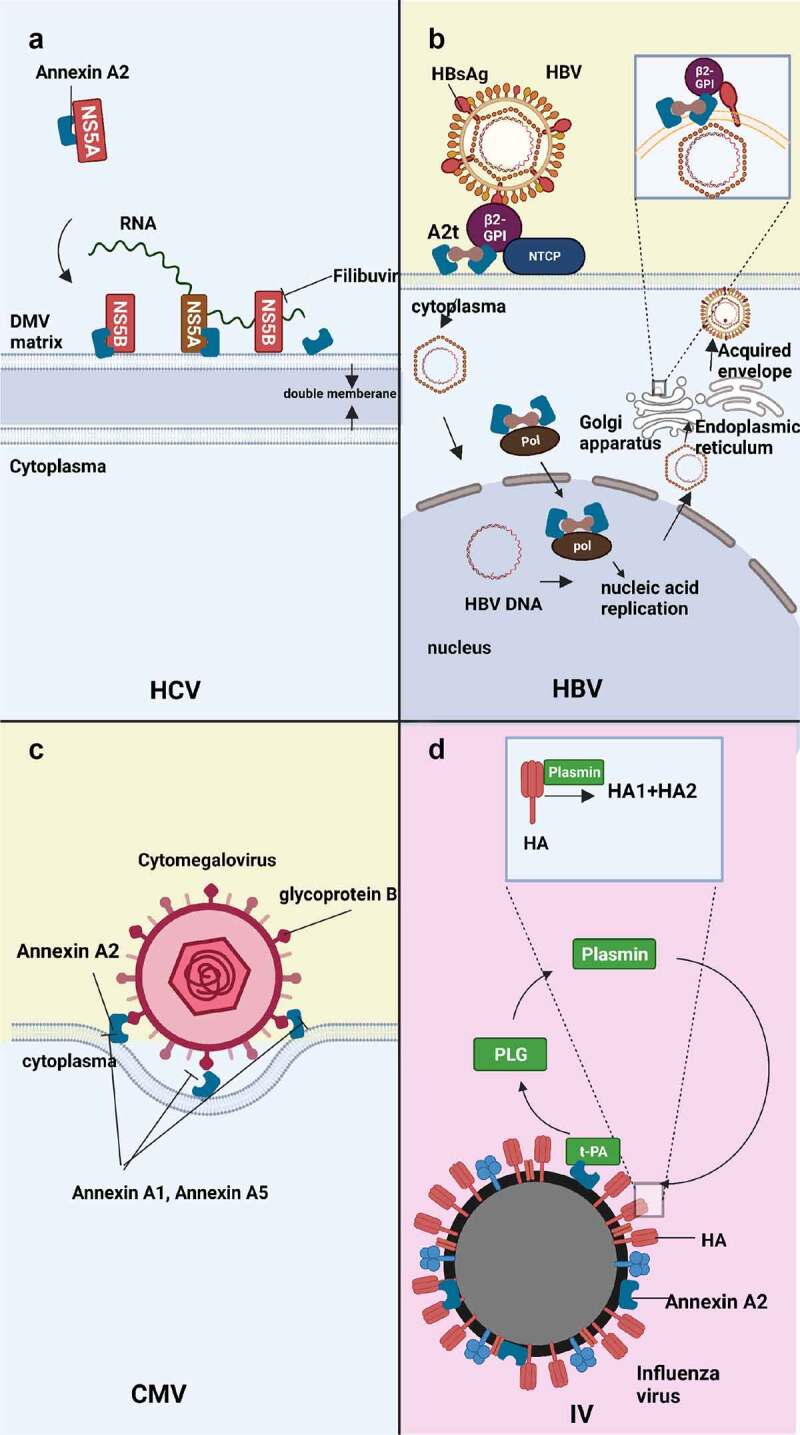Figure 3.

Effect of Annexin A2 in HCV, HBV, CMV, influenza virus infection. (a) Annexin A2 mediates HCV assembly in DMV. Annexin A2 monomer binds to NS5A and NS5B in the lipid-rich membrane microenvironment of DMV to promote virus assembly and replication. (b) Annexin A2 mediates HBV Adhesion, Nucleic Acid Replication and Assembly, budding. In the adhesion stage, Annexin A2, β2-GPI, NTCP, and HBsAg form a complex that facilitates the fusion of the viral envelope with the host cell envelope. During nucleic acid replication, Annexin A2 transports HBV polymerase to the nucleus. In the budding stage, the HBV nucleocapsid acquires the envelope from the Golgi apparatus or endoplasmic reticulum. HBsAg, β2-GPI, and Annexin A2 bind to the envelope and facilitate HBV budding. (c) Annexin A2 mediates CMV adhesion. During the process of adhesion, the glycoprotein B located on the envelope of CMV interacts with Annexin A2 located on the membrane of the host cell. This interaction leads to the binding of the two surfaces, facilitating the attachment of the virus to the host cell. (D) Annexin A2 mediates the replication of influenza virus. According to the mainstream theory, the haemagglutinin (HA) protein of the influenza virus undergoes cleavage into two parts, HA1 and HA2, which are involved in the process of virus replication. Annexin A2 plays a crucial role in this process by binding to t-PA, and the resulting complex facilitates the conversion of PLG into plasmin, which in turn assists in the cleavage process.
